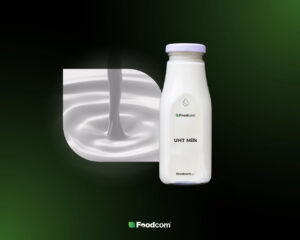- China is struggling with a milk surplus due to lower demand and reduced dairy imports.
- New Zealand is seeing record milk production, with a 10.2% increase in exports.
- Stable prices for skimmed milk powder and cheeses such as Gouda and Mozzarella continue in the European market.
- Butter and cream prices remain solid, but forecasts for 2025 suggest possible declines
Welcome to Partners!
Welcome back to our newsletter!
China is struggling with a milk surplus due to falling demand and reduced dairy imports, while New Zealand has record milk production and exports are up 10.2% year-on-year.
Meanwhile, the US and European markets face potential challenges from disease outbreaks and production fluctuations. Despite these obstacles, demand for products such as skimmed milk powder remains strong, keeping prices stable in the near term.
Let’s see what else has happened in the dairy market recently!
Skimmed milk powder
Skimmed milk powder (SMP) for feed remains stable and has held steady in Q4. Prices fluctuate between €2600 and €2640/MT for wholesale deliveries, and deals for Q1 2025 have already been concluded at €2650/MT. This consistency is supported by solid demand from the feed industry and there are few signs of significant price changes in the near term.
Cheese
The cheese market is showing stable prices in all areas. Mozzarella is expected to remain priced well above €5,000/MT, with no signs of reaching lower levels. Gouda prices for fast delivery range between €4800 and €5000/MT, but in the fourth quarter most contracts start at €5000/MT or more. Cheddar, meanwhile, has strengthened its position, with no availability below EUR 5000/MT, making it one of the stronger categories in the cheese market.
Fats
Butter prices remain solid, with October levels at €8050-8100/MT, with prices expected to reach €8200/MT in Q4. Looking to Q1 2025, prices are expected to soften slightly, heading towards €7700-7900/MT. In particular, Oceania butter and anhydrous milk fat (AMF) are becoming increasingly attractive to EU buyers due to a discount of around €1,000/MT under licensed import schemes.
Liquids
Cream prices have softened slightly compared to previous deals closing at €10,000/MT. Currently, deals are closing in the €9800-9900/MT range. Although the market has calmed down somewhat, overall demand remains strong, especially in the second half of the year.
Skimmed milk concentrate prices remain stable, holding in the EUR 2550-2600/MT range. The market is showing little movement as demand remains balanced with supply. Buyers can expect stable prices in the short term, with no major changes on the horizon.
Spot milk prices fell slightly this week, but remain above EUR 60/100 kg. In southern Germany, prices as high as €67/100 KG were recorded, while in the Netherlands some loads were sold just below €60/100 KG. The most noticeable change in the market is the availability of spot quantities of milk, suggesting a more balanced supply situation in the second half of the year.
Whey powder
The market for sweet whey powder (SWP) used for feed production remains relatively quiet at present. Spot prices are holding steady in the €910-930/MT range, but looking ahead to Q4, we see a slight increase to €940-950/MT. Early forecasts for Q1 2025 suggest a further increase to EUR 960/MT. Despite a quiet market, steady demand for SWP is keeping prices steady, with little volatility expected in the short term.
What else?
China
China is facing a milk surplus as falling birth rates and a weak economy have reduced demand, leading to falling prices and farm closures. Despite efforts to stimulate the dairy sector, milk production has increased, doubling the milk powder surplus. Export growth is constrained by continued distrust following the 2008 adulteration scandal, with domestic consumers continuing to prefer foreign brands. Dairy imports also fell, reflecting oversupply and weaker demand.
New Zealand
Milk production in New Zealand is growing rapidly, with July’s 9.2% year-on-year increase reaching an all-time high. In contrast, production forecasts in the US and Europe point to potential constraints due to issues such as avian flu and cattle diseases. In July, US milk production fell by 0.4%, while in Europe it rose by 1.3%.
Milk exports from New Zealand increased by 10.2%, driven by strong demand for skimmed milk powder and other dairy products, particularly in Asian markets.
![Global dairy shifts: surplus in China, record exports in NZ – what’s next? [237th edition of the DAIRY newsletter] Global dairy shifts: surplus in China, record exports in NZ – what’s next? [237th edition of the DAIRY newsletter]](https://foodcom.pl/wp-content/uploads/2023/08/Foodcom_Newsletter_Dairy-1520x760.jpg)





